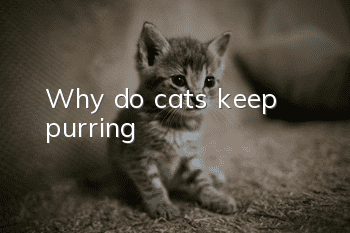The pathogenesis and symptoms of feline chlamydia pneumonia, cat health!

Chlamydia pneumonia is a common disease in cats
The pathogenesis and symptoms of feline chlamydia pneumonia, healthy cats! Feline chlamydia pneumonia is a type of cell disease caused by Chlamydia psittaci The bacteria can also infect birds and humans. Chlamydia psittaci grows and multiplies within the cells lining the respiratory tract, causing irritation and mild symptoms of chlamydia in cats. It may also develop in the gastrointestinal and reproductive tracts but usually causes no symptoms.
Feline chlamydia pneumonia is a highly contagious disease that mainly causes relatively mild chronic upper respiratory tract disease and pneumonia in cats. Chlamydia is a microorganism that is structurally intermediate between bacteria and viruses. Chlamydia can only survive within cells, so it is an absolutely intracellular parasitic bacterium. Chlamydia is quite fragile and unstable once it leaves the host's body and can be easily inactivated by lipid solvents and detergents.
Chlamydia infection in cats was initially considered to be the main cause of upper respiratory tract disease in cats, so it was called feline pneumonitis. Later, we gradually learned about feline herpes virus (FHV) and Feline Calivirus (FCV) is the two main causes of the upper respiratory tract, while Chlamydia mainly causes infection of the conjunctiva of the eyes and has a milder impact on the upper respiratory tract. Therefore, the name Feline Pneumonia is not very clear. Appropriately, chlamydia infection usually does not cause pneumonia.
Currently understood, feline chlamydia is only one of the culprits causing feline upper respiratory tract infection complex syndrome (such as infectious feline rhinotracheitis (details), feline calicivirus). Chlamydia accounts for about 10%-15% of all cat upper respiratory tract infections, and often occurs at the same time as another upper respiratory tract infection. Therefore, it is not the main culprit, but an assisting culprit. When other microorganisms are infected, Take the opportunity to put a foot in and make up for it. It mainly infects the nose and eyes.
1. Transmission routes
Chlamydia feline can be transmitted from the secretions of the upper respiratory tract. Common transmission routes include the following: contact Infected objects such as cat and dog cages, food or water bowls, cat litter boxes, pet owners' contaminated clothing, and pet owners' hands. Contact with discharge from the mouth, nose, or eyes of an infected cat. Exposure to germs from cats when they sneeze and cough within 4 feet. Carrier cats do not show symptoms of the disease; however, the bacteria are hidden in the conjunctiva and can be excreted in eye discharge. The bacteria excreted in secretions may increase in times of stress (such as the introduction of a new cat). Reports of mild conjunctivitis in humans caused by Chlamydia psittaci infection in cats are rare but have occurred.
When cats are infected with chlamydia, the clinical symptoms of cats can last for up to several weeks, and there will be recurrence after improvement. Some recurrences may be caused by urgency (for example: Transportation, anesthesia, surgery, foster care, use of corticosteroidsalcohol, etc.), chlamydia is also easily transmitted to kittens through female cats. However, some reports have found that unweaned kittens are less susceptible to chlamydia, possibly because of the passive immunity provided by the mother's colostrum. It protects kittens during the first six weeks after birth. After the cat recovers, it will continue to spread the infection to surrounding cats.
2. Symptoms
The initial clinical symptom is conjunctivitis, which is later accompanied by fever, severe tearing, and eye secretions that turn into Symptoms of rhinitis may also occur, including: increased nasal secretions, sneezing, nasal congestion, etc.; later clinical symptoms are suppurative pneumonia, which may cause difficulty breathing and lung disease due to excessive secretions in the trachea and alveoli. Edema. The entire course of the disease lasts approximately 30 days. The bacteria can still be found in the conjunctiva and lungs of sick cats more than 30 days after infection, so sick cats will continue to be infected with the bacteria even if they recover.
3. Treatment
Mainly antibiotics, good home care, balanced diet, nutritional supplements, vitamin B complex in the early stage of the disease Injections are also required. In addition to the topical use of antibiotic-containing eye ointments (3 to 4 times a day), systemic antibiotic administration should be noted as it will have a negative impact on the enamel growth of the developing kitten's teeth, so it is not needed unless the condition worsens.
- What aspects can tell the health status of kittens?
- Why do some cats not like litter boxes?
- Why do cats like to lick their tails and butts? You should be wary of these reasons
- The cat doesn't eat, its limbs are paralyzed and can't stand up
- Is the cat breathing out of anger or fear?
- How can Jinjila tell if it's finalized?
- Are you aware of the 5 most damaging ways to raise British Shorthair cats?
- How to deworm cats? Novice cat lovers, take a look!
- How to raise Turkish Angora cats
- How long does it take for a cat’s placenta to remain in the body before it becomes dangerous?



